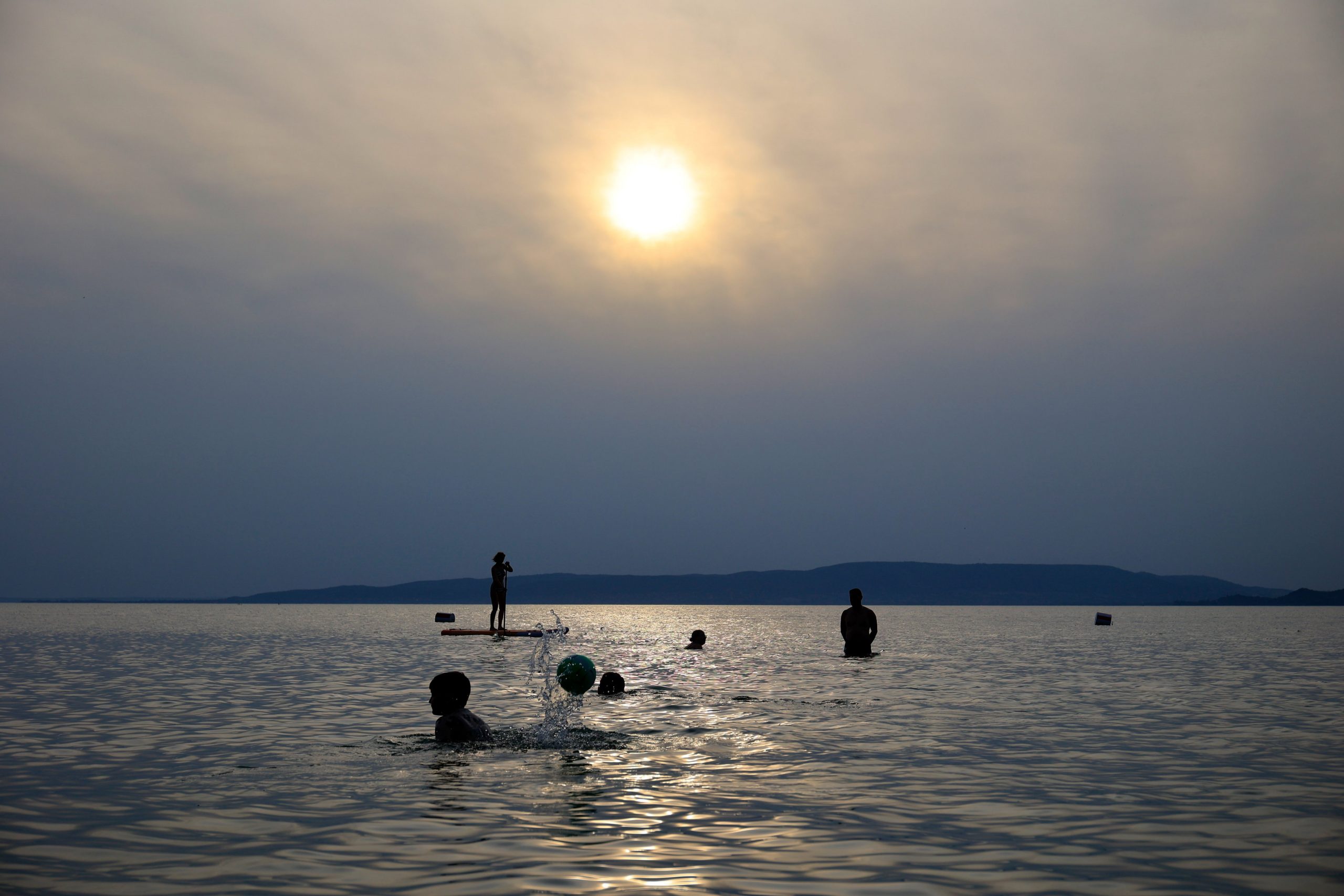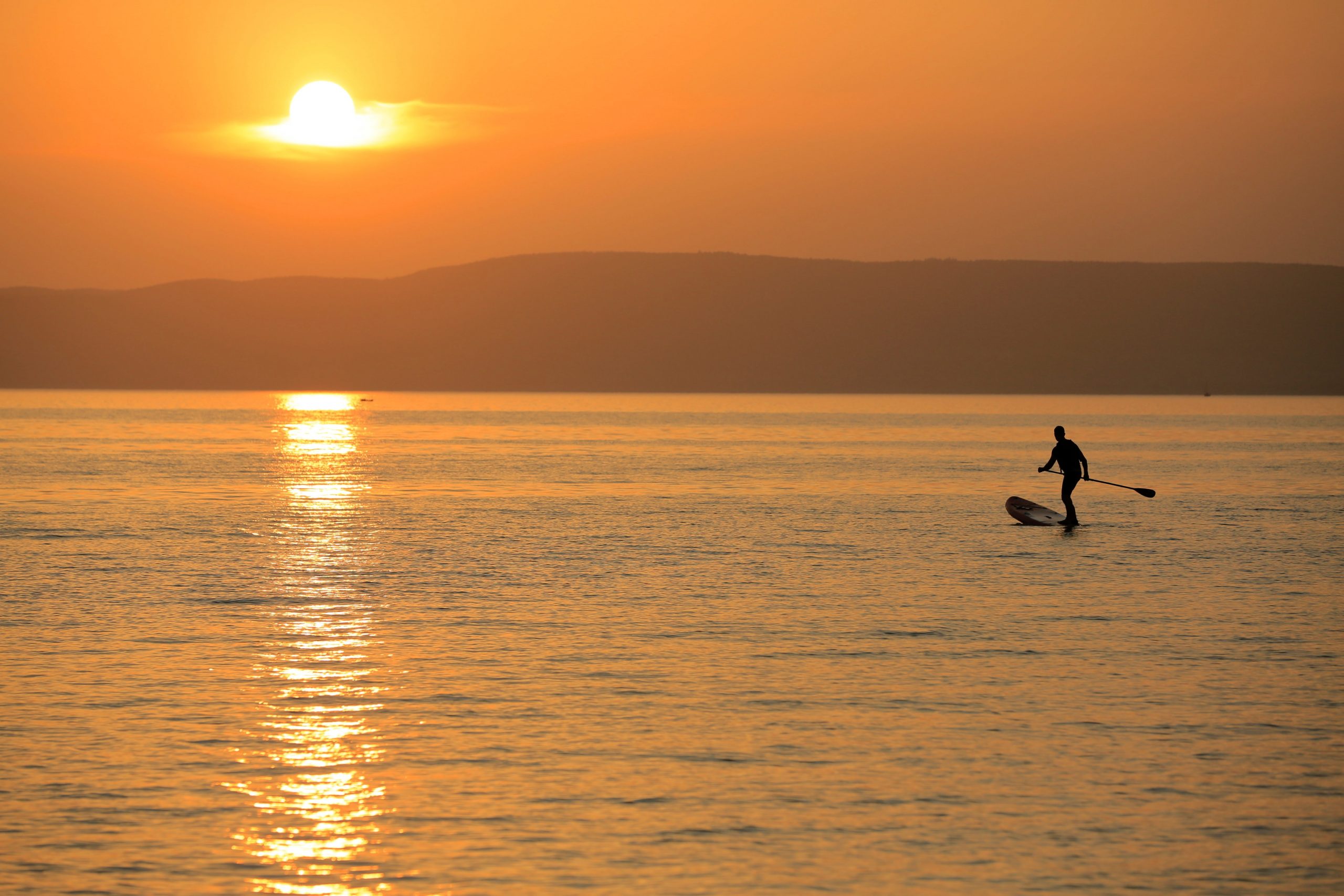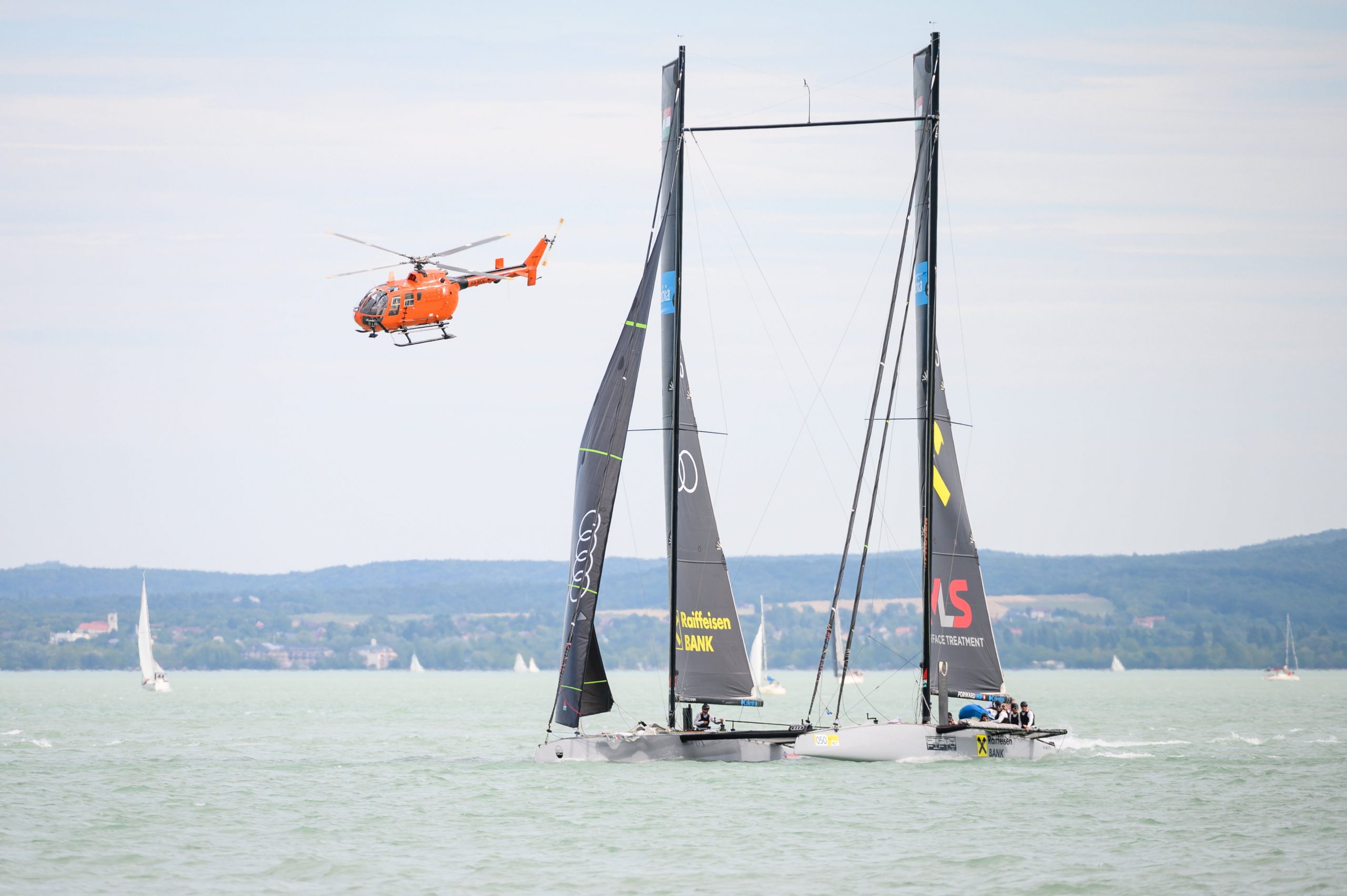
The water is nice and clear and only a little lower than usual at this time of the year, so what is the problem around Lake Balaton? – Telex asked experts.
According to some estimates, roughly two bathtubs of water per square meter are missing from land and water almost all over the country.
The water level of Lake Balaton is also lower, but the water is clear and there is no sign of algae blooms – so far. The drying up of Lake Velence and Lake Fertő is becoming a more threatening scare, but until the second week of August, the only thing holidaymakers are worried about at Lake Balaton is the water level, Telex reports.
Lake Balaton is 3.7-meters deep on average and has a catchment area of around 5,000 square kilometers, is fed by 90 different watercourses, and as everyone learned in school, its water supply comes largely from the Zala River. Rain has been absent from the lake and its surroundings for months, while the weeks-long heatwave has caused the lake’s water to evaporate intensively.
If there is no precipitation in the catchment area, Lake Balaton will feel it. And it’s true that fifty to sixty percent of its water is replaced by the Zala, but that too is brought by rain,”
explains Viktor Tóth, a senior research fellow at the Balaton Limnological Research Institute.
Related article
Lake Balaton Water Level Concerningly Low but Not Yet Critical
"The lake has a natural water level fluctuation of 40-50 centimeters, which the ecosystem can easily cope with, but we interfere by over-regulating. Over-stabilization is not good for the natural processes," the General Directorate of Water Management (OVF) said.Continue reading
The water balance of Lake Balaton is currently in its worst state in the last 100 years (roughly the ratio of input to output, i.e. how much water flows into the lake, falls on its surface; and how much is removed by evaporation, water discharge, and the Sió Channel). The National Water Directorate General wrote to us that reliable, accepted water balance data for Lake Balaton has been available on a monthly basis since 1921.
A review of these shows that the period of January-July 2022 is the lowest since 1921, which represents a strong negative extreme.”
According to the General Directorate of Water Management (OVF):
From January to the end of July, the lake’s catchment area received 23% less rainfall than the long-term average (1991-2020). The catchment was already significantly drier than usual last year, so water shortages have continued to accumulate this year.”
Currently, the Zala River, the main surface feeder of Lake Balaton, has a runoff of only 25-30 percent of what is normal at this time of year.
Some intermittent small watercourses in the catchment have dried up. Some water can still be seen in most streams, but much less than usual. It is also interesting, Telex reports, how dry the landscape is on the eastern side of the lake, while in the western part, especially around the waterlogged area of Kis-Balaton, there are patches of green grass and flowers sprouting
Fact
There have been times in the past 100 years when the water level at Lake Balaton was much lower than it is now (and half a meter higher). The image of the drought between 2000 and 2004, when families with small children used to go swimming on the sandbanks rising from the lake on the southern shore, is still vivid in the collective memory.
The average water level of Lake Balaton was 78 centimeters on August 9th this year, according to the General Directorate of Water Management, which predicted almost exactly this in its spring forecast.
Related article
Lake Balaton May Dry Up within Decades, Scientist warns
This could happen by as early as 2050, and by 2035 the lake could become unfit for bathing, according to limonologist Viktor Tóth.Continue reading
After the aforementioned sandy summer, on the 19th and 20th of October 2003, a value of 55 centimeters lower than this – 23 centimeters – was recorded.
This means that the current average water level is low, but by no means exceptional,”
the OVF wrote.
To the best of my knowledge, there are no climate scenarios that suggest that summers will be wetter and colder in the future, so it is a slight exaggeration to say that this summer has been one of the coldest and wettest summers…,”
said Viktor Tóth. He added, however, that “Water experts can estimate the water level of Lake Balaton a few months in advance based on the annual water level fluctuations of the past decades. There have been three periods of drought in the last 20 years, so we can use this experience to get a rough idea of what will happen to Lake Balaton next year. By contrast, we have no experience of climate change: it is very difficult to predict where a planetary-scale process will be in five or fifty years’ time, which is why climate scenarios are so wide-ranging. The larger an ecosystem, the more unpredictable its behavior. It is easier to describe the biological connections of a tiny pond with two or three dozen measurements, while in the case of Lake Balaton this is impossible with thousands.”
In addition to the low rainfall, another problem is that the water level of the lake is kept too high and too stable for tourism and economic reasons, and nature does not like this.
Related article
Photo Report: Sunken Boat, Record Time Winner - This Is What the Blue Ribbon Regatta Was Like
The Fifty-Fifty - a Hungarian-designed twin-masted catamaran - broke its own course record of 7 hours 13 minutes 57 seconds, set in 2014, by 36 seconds.Continue reading
The drying up “theoretically could happen, but it would require really destructive, very mindless behavior in the meantime. And if we behave like that, in ten years’ time we will not even be giving climate change a chance,” Tóth explained.
For forty years, scientists have been warning that water will be the most important resource that countries will fight for. This warning has been ignored by most governments, but some, like Norway, the Netherlands, Iceland, have taken the scientists’ advice seriously and are preparing for it. Others have only short-term goals in mind.”
The large algal bloom in 2019 was a warning to experts that the lake’s monitoring system needed to be modernized. A further concern is that the infrastructure around Lake Balaton is still in place from the 1980s and 1990s: outdated drainage and wastewater treatment systems, for example.
According to Tóth, several decades of backlog would have to be made up “to present a tourist environment with modern water management.” “Water management experts know what should be done. Of course, the beneficial effects will not be seen immediately, but in ten years or so, so such investments will not bring benefits during an election cycle,” said Tóth.
Source: Telex
Featured image: Lake Balaton at Fonyód on the beach of Alsóbélatelep at sunset on June 28, 2022. Photo by György Varga/MTI



